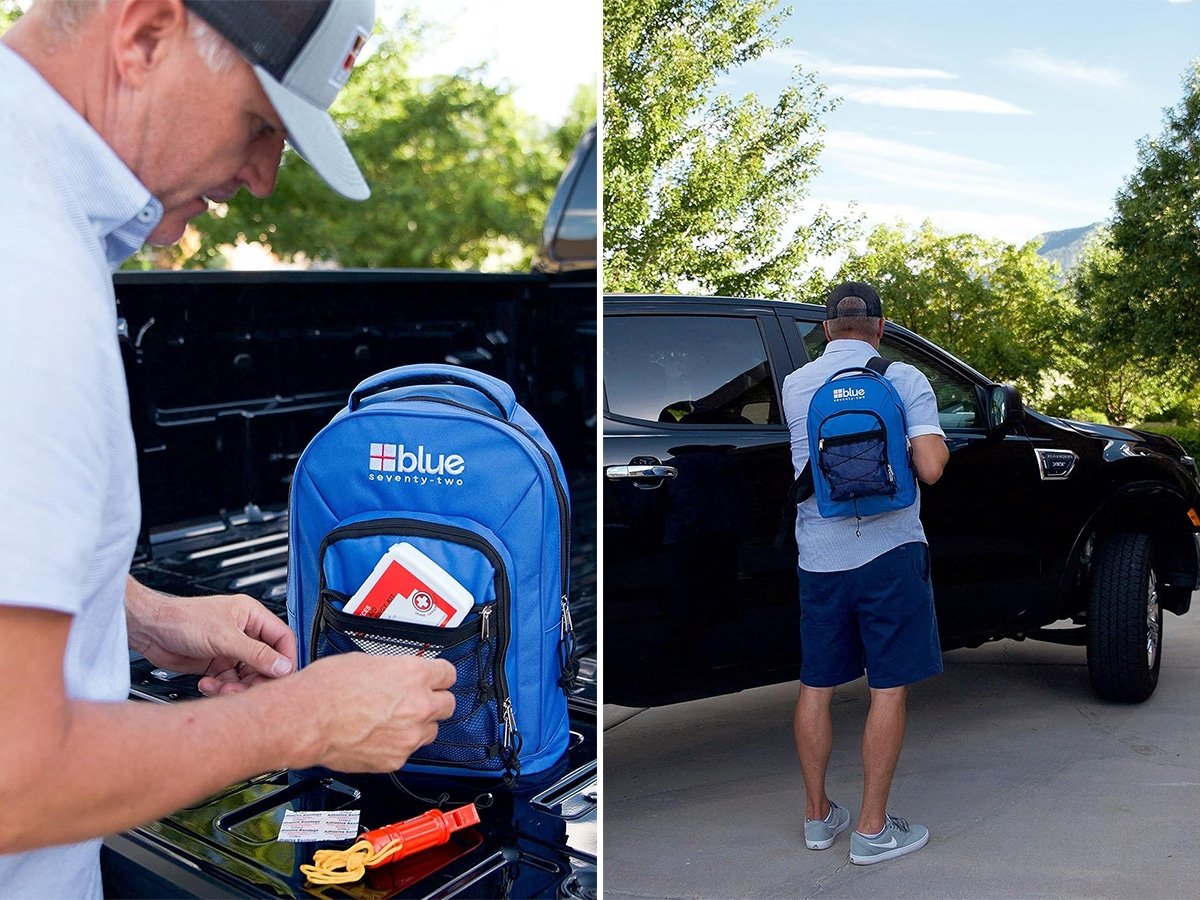My heart breaks to watch the state I have called home for 35 years burn. The images on television are heartbreaking and it’s hard to believe that these fires in California are happening. Many of my friends have evacuated and some have lost everything. It’s all so hard to fathom and my heart goes out to them and their families.
 These wildfires underscore the importance of being prepared for emergencies. While wildfires are a concern for many, natural disasters and emergencies can strike anywhere. Whether it’s a hurricane, earthquake, flood or other unexpected crisis, having a well-packed go bag ready can make all the difference in ensuring your safety and peace of mind.
These wildfires underscore the importance of being prepared for emergencies. While wildfires are a concern for many, natural disasters and emergencies can strike anywhere. Whether it’s a hurricane, earthquake, flood or other unexpected crisis, having a well-packed go bag ready can make all the difference in ensuring your safety and peace of mind.
Like so many, I’ve been watching the news daily and every time a reporter asks an evacuee what they grabbed before fleeing their home, they always say (among other things) pictures (this is the service I use to digitize my precious pictures in case anything happens to the hard copies.) We’ve heard many people remind us that when you need to evacuate, you need to remember the Ps: People, pets, prescriptions, photos and (important) papers. You might also want to add phones, personal computers and plastic (credit cards) to that list.
Here’s a comprehensive guide to help you pack your go bag with everything you need to face an emergency situation. And if you’d rather just purchase something already packed and ready to go, this emergency go bag is a 72-hour survival backpack, with everything one person will need in the event of a wildfire, earthquake, tornado, hurricane and other emergency.
Why you need a go bag
A go bag, also known as a grab-and-go bag or emergency kit, is a portable pack containing essential items you’ll need to survive and stay comfortable for at least 72 hours. Emergencies often require quick evacuations, leaving little time to gather supplies. A go bag ensures you’re ready to leave at a moment’s notice, reducing stress and saving valuable time.
While the contents of your go bag may vary based on your location, personal needs, and the types of emergencies you’re preparing for, certain items are universally important.
Essentials For Your Go Bag
- Water and Hydration
- Water: Pack at least one gallon of water per person per day for three days. If space is limited, include a portable water filtration system or water purification tablets.
- Reusable water bottle: Choose a durable, collapsible water bottle to save space.
- Food and Nutrition
- Non-perishable food: Pack high-calorie, shelf-stable items such as protein bars, canned goods, dried fruits, and nuts.
- Utensils: Include reusable travel utensils and a portable can opener.
- Special dietary items: If anyone in your household has allergies or dietary restrictions, pack suitable alternatives.
- Clothing and Warmth
- Change of clothes: Pack lightweight, season-appropriate clothing, including socks and underwear.
- Sturdy shoes: Include a comfortable pair of walking shoes.
- Emergency blanket: Thermal blankets are compact and retain body heat. Or buy a pack of emergency blankets like these.
- Rain gear: A lightweight poncho or waterproof jacket can be lifesaving in wet conditions.
- First Aid and Medications
- First aid kit: A first aid kit that include bandages, antiseptic wipes, adhesive tape, pain relievers, tweezers, and any specific items like an EpiPen if needed is an essential.
- Prescription medications: Pack a 7-day supply of any essential medications, clearly labeled.
- OTC medications: Add items like antihistamines, anti-diarrheal tablets, and electrolyte powders.
- Personal Hygiene Items
- Travel-size toiletries: Toothbrush, toothpaste, deodorant, and soap.
- Sanitation supplies: Pack hand sanitizer, wet wipes, and a small roll of toilet paper.
- Feminine hygiene products if needed.
- Tools and Safety Equipment
- Multi-tool: A compact multi-tool with a knife, pliers, and screwdriver is invaluable.
- Flashlight: Choose a durable flashlight with extra batteries or a hand-crank model.
- Duct tape: A roll of duct tape can be used for quick repairs.
- Whistle: A safety whistle is useful for signaling for help.
- Documents and Money
- Copies of important documents: Include identification, insurance policies, medical records, and emergency contact information in a waterproof pouch.
- Cash: Pack small bills and coins in case electronic payments aren’t available.
- Keys: Include spare house and car keys.
- Communication and Navigation
- Battery-powered or hand-crank radio: Stay informed about emergency broadcasts.
- Portable charger: A fully charged power bank/portable phone charger can keep your devices running.
- Map: Include a physical map of your area, especially if GPS services go down.
- Comfort and Entertainment
- Comfort items: Pack a small blanket or stuffed animal for kids.
- Entertainment: Include a deck of cards, a book, or other small activities to pass the time.
Tips for Packing Your Go Bag
- Choose the right bag
Select a durable, lightweight, and waterproof bag with multiple compartments. Backpacks are ideal as they leave your hands free, but duffel bags or rolling suitcases can work if needed.
- Personalize for your family
- Kids: Include items like diapers, formula, or small toys.
- Pets: Pack food, water, a leash, waste bags, and any medications your pets need.
- Seniors: Account for mobility aids or medical devices.
- Rotate and update regularly
Check your go bag every six months to replace expired items, update clothing for the season, and adjust the contents based on any changes in your family’s needs.
- Make it accessible
Store your go bag in a designated, easily accessible location. Each family member should know where it is, and older kids should be able to carry their own.
- Have a plan
Your go bag is only part of the equation. Ensure your family has an emergency plan. Everyone should know the evacuation routes and communication strategies.
Beyond the Basics: Additional Tips
- Emergency apps and alerts
Download apps like FEMA, Red Cross, or local alert systems to receive real-time updates and resources.
- Practice makes perfect
Conduct regular drills with your family to familiarize everyone with the go bag contents and evacuation procedures.
- Stay informed
Monitor weather forecasts and emergency alerts, especially during high-risk seasons like wildfire season in California or hurricane season along the Gulf Coast.
Emergencies can happen anytime and anywhere, but having a go bag packed and ready provides a critical layer of preparedness and peace of mind. Start packing your go bag today because when it comes to emergencies, preparation is the ultimate key to safety.
Want more travel news, tips and deals? Sign up to Johnny Jet’s free newsletter and check out these popular posts: The Travel Gadget Flight Attendants Never Leave Home Without and 12 Ways to Save Money on Baggage Fees. Follow Johnny Jet on MSN, Facebook, Instagram, Pinterest, and YouTube for all of my travel posts.



